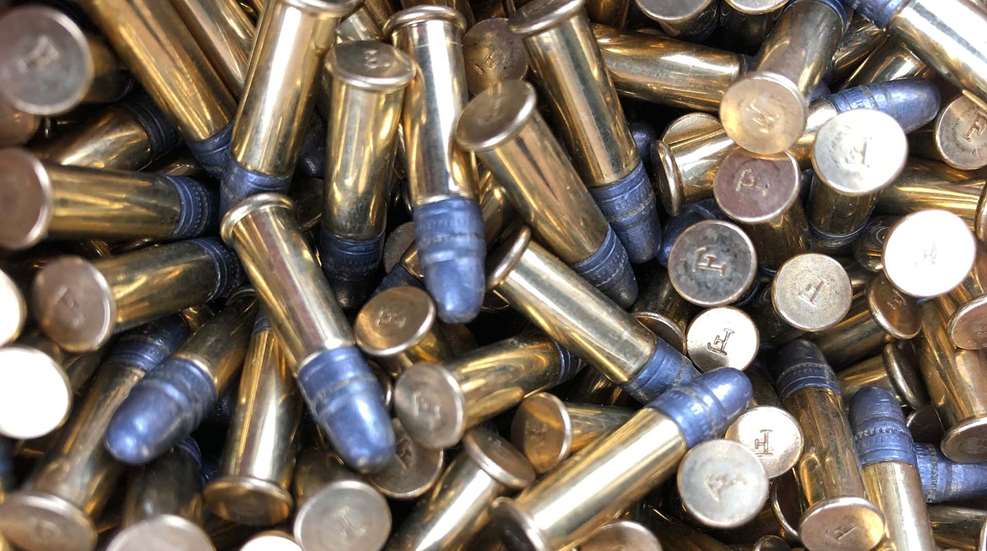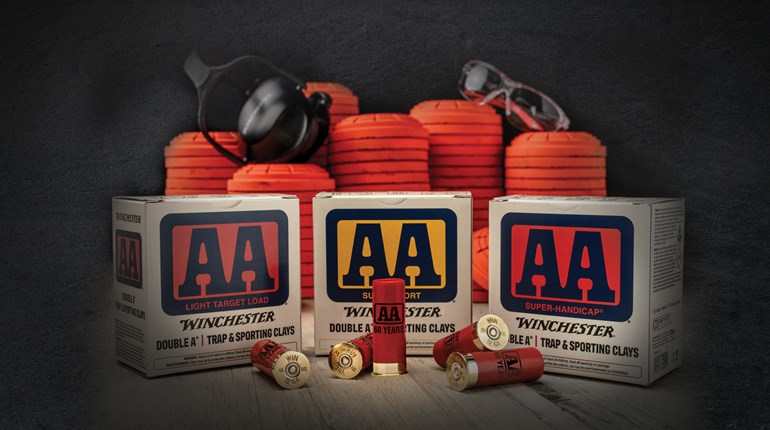
If you’re a first-time handgun owner, you might find yourself in the ammo aisle of your local sporting goods store (assuming their shelves are stocked) staring at boxes and boxes of ammunition, wondering why some are so much more expensive than others. Which one should you buy? What are they all for?
This price differences come down to several factors: The projectiles used, the case material used, other components and marketing-related reasons (some manufacturers just brand themselves as higher-end than others as a marketing strategy). We’ll give you a quick rundown of some of these components and then go into what ammo to choose for which uses. For the purposes of keeping this article a reasonable length, we’ll focus on semi-auto handgun ammo as opposed to revolver and rifle ammunition.
First: casings. Brass casings are standard, but you can also find ammo with casings made of steel or aluminum. Brass is the only one that’s practical for reloading, if you care about that. It’s also one of the most expensive metals on the list but by far the most common for casings.

Federal’s Syntech ammo is designed for range practice. It is loaded with a polymer-coated bullet designed to shoot more cleanly.
Next, projectiles: the actual bullets themselves. This is not an all-inclusive list, but the most common types of projectiles you’ll encounter in handgun ammunition are full metal jacket (FMJ), hollowpoints, jacketed hollowpoint, and round nose. Round nose projectiles are frequently seen in .22 LR ammo, and they’re the simplest type of projectile—basically just a hunk of lead with no distinguishing characteristics other than a simple rounded-off nose. FMJ projectiles are generally made of lead encased in another metal, which allows them to be pushed at higher velocities without deforming. Hollowpoint bullets do in fact have a hollow tip, which allows the projectile to expand very quickly when it encounters resistance, like ballistics gel or flesh. Jacketed hollowpoints (JHP) are a sort of compromise between hollowpoints and FMJs, featuring a hollow tip and a metal jacket. You might also find some ammo on the shelf that features coated projectiles, such as Federal’s Syntech, which features polymer-coated projectiles. These are appropriate for practice and are intended to shoot more cleanly in your gun.
What to Shoot for Practice
When you’re headed to the range to punch holes in paper, you need ammo that’s reliable but as affordable as possible. It doesn’t need to be complicated because it doesn’t have to do much—punching holes in paper isn’t exactly ballistically demanding. To that end, full metal jacket projectiles are ideal. They’re cheaper than other bullet types and do everything you need a range bullet to do. Hollowpoints or JHP projectiles are fine, but they’re considerably more expensive and they do things (like expand upon impact with tissue) that you have no need for at the range. Don’t waste your money plinking with them except to confirm that your preferred self-defense ammo runs well in your gun.

22 LR practice ammo often uses simple round nose projectiles.
As for casings, steel is cheaper than brass, if you can find steel-cased ammo. Be aware that steel-cased ammo tends to cheap out on other components as well, which can lead to reliability problems and extra fouling in the gun. But if you shoot high volume and are on a tight budget, and you don’t mind cleaning guns thoroughly and practicing clearing malfunctions, steel-cased practice ammo might be for you.
What to Shoot for Defense
When it comes to stopping a real-life threat, you need reliability and performance. You need a projectile that will expand rapidly, inflicting maximum tissue damage in a very short distance. Hollowpoint and jacketed hollowpoint bullets are designed to do just that—expand quickly upon impact, imparting all or most of their energy into the threat and reducing the risk of overpenetration. Why is overpenetration a big deal? Two reasons: 1. If a bullet exits the threat with a lot of energy still in it, all of that energy is wasted and would have been better used to stop the threat more efficiently; 2) If a bullet exits the threat with a lot of energy still in it, you have to be concerned about where that bullet is going to go. You don’t want it going through your bedroom wall or into an innocent bystander. Bullets that expand rapidly and expend most or all of their energy are ideal for self-defense.
This is why ammo loaded with FMJ projectiles is not ideal for self-defense: FMJ bullets basically punch a hole through a target and keep on going without changing their shape much. That’s too much penetration, not enough stop-the-threat power and too much wasted energy. This is not to say that a full metal jacket bullet will not stop a threat, because it absolutely could—only that it’s certainly not the most reliable stopper or the safest, most effective choice.
Hollowpoints and jacketed hollowpoints are considerably more expensive than FMJ projectiles, which makes it impractical to shoot HP and JHP at the range unless budget is of no consequence to you.
What to Shoot for Up-Close Training
If you compete or train with handguns in enclosed spaces, like shoot houses, or on up-close steel targets, you might consider practicing and training with ammo that’s loaded with frangible bullets. These specialty projectiles break apart or disintegrate upon impact. This makes them utterly unsuitable for self-defense, of course, but they’re a smart choice for the aforementioned training scenarios where ricochets, splatter or overpenetration might be a concern. Be aware that frangible ammo might have a different point of impact than the ammo you typically shoot out of your handgun.
Frangible ammo is more expensive than other types of practice ammo, so I recommend you only shoot it if you feel it’s necessary for the type of training you’ll be doing. To be clear, you do not need to shoot frangible projectiles on all steel targets—only really close ones. The distances at which you engage steel targets in competitive shooting are safely far enough away that frangibles aren’t needed, for example.
Bottom Line
It’s important that you choose the right semi-auto handgun ammo for the right application. Using the wrong thing for the wrong application is, at best, a waste of money, or at worst, potentially ineffective at stopping a threat. In short:
- Buy inexpensive, possibly steel-cased ammo loaded with FMJ projectiles for practice.
- Buy premium ammo loaded with hollowpoint or jacketed hollowpoint projectiles for self-defense.
- Consider specialty ammo, such as that loaded with frangible bullets, only for specific training scenarios.















































